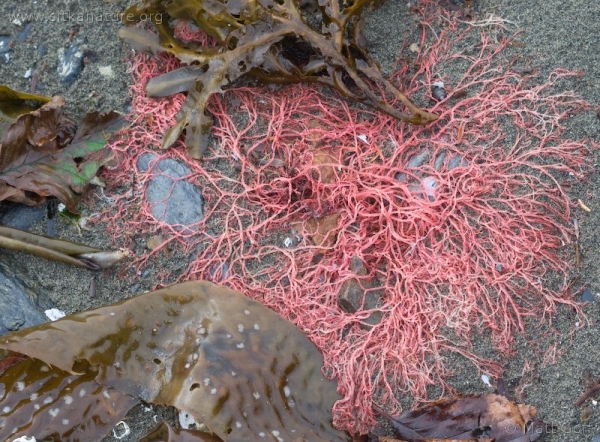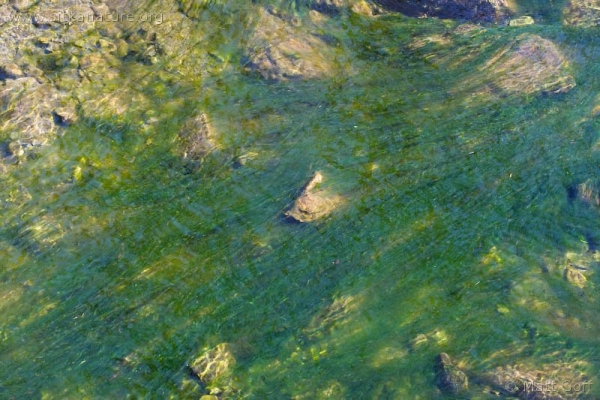Examples of Brown (Ochrophyta) and Red (Rhodophyta) seaweeds
While writing the post about Sea Otters I was reminded that despite having good resources for getting started, I still hadn’t managed to get anything up on the wiki about algae, marine or freshwater. So today I found my copy of “Field Guide to Seaweeds of Alaska” (see also the website at seaweedsofalaska.com) and started adding species that were said to occur in Southeast. The book indicates there are about 550 species known from the state, but it has accounts for mostly common species, perhaps 150-170 total. So far I’ve created pages for a little over 100 species and made it through the green and brown algae, and partway through the red algae. I think by the time I’m done going through this reference I’ll have about 140 or so species. I’m pretty sure I have at least one other reference that might include more species for Southeast, and at some point I’ll go through it as well. I’m curious about how many of the 550 species known for the state occur in Southeast – my guess is it’s a large majority of them.
I didn’t really spend much time with any of the species since I mostly just wanted to get the name and taxonomic information in quickly. The field guide does have nice photos of most species, and brief but informative accounts of range, habitat, and similar species. I was interested to notice that in at least a couple of cases species (or sets of species) were listed twice – I guess I had heard that different stages of seaweed life cycles can look different, but I hadn’t really thought about what that might mean in practice. Apparently in some cases different stages were formerly considered different species. I’m not sure how it was determined they were different stages, but it might be interesting to find out. One in particular I remember is the Tar Spot Alga (Mastocarpus spp.) – it is said to be the “alternate reproductive phase (tetrasporophyte) of Turkish washcloth.” I’m not sure what that means exactly, but I also was quite interested to find out that this phase can live to over 90 years.
Working on these has helped me to get a mental framework which will help me have a better sense of what I’m looking at down on the beach. Mostly I’ve not paid too much attention, but now that I’ve started to get a sense of what’s around and what things look like, I feel like I might be a bit less likely to just gloss over what I’m seeing down on the beach. I’m also feeling inspired to maybe get a wetsuit and start doing some swimming/snorkling and shallow underwater exploration.
Green algae (Chlorophyta) in Indian River

